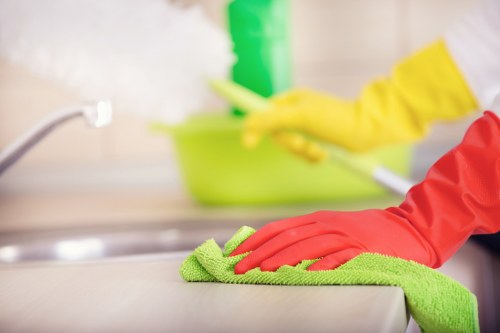Effective Domestic Cleaning with Sofa Cleaners

Keeping your home clean is a fundamental aspect of maintaining a healthy and comfortable living environment. Among the various cleaning tasks, maintaining clean sofas can significantly enhance the appearance and longevity of your furniture. Domestic cleaning with the right sofa cleaner not only removes visible dirt and stains but also helps in eliminating allergens and bacteria, ensuring a safer home for you and your family.
Choosing the appropriate sofa cleaner is crucial. There are numerous products available in the market, each designed to address specific types of stains and fabric materials. Understanding the composition and application of these cleaners can help you make an informed decision, tailored to the unique needs of your upholstery.
Regular cleaning of sofas prevents the buildup of grime and extends the life of your furniture. It also contributes to maintaining a fresh and inviting atmosphere in your living spaces. In this comprehensive guide, we will explore the best practices for domestic sofa cleaning, the types of cleaners available, and tips to achieve optimal results.

Understanding Sofa Fabrics
Sofas come in a variety of fabrics, each requiring specific cleaning methods. Common upholstery fabrics include cotton, linen, polyester, leather, and microfiber. Identifying the type of fabric your sofa is made of is the first step towards selecting the most effective cleaning solution.
Cotton and linen fabrics are natural fibers that are both durable and comfortable. They are generally easy to clean but can be prone to staining if not treated promptly. Polyester is a synthetic fabric known for its resilience and resistance to wrinkles, making it a popular choice for many modern sofas.
Leather sofas require a different approach, as harsh chemicals can damage the material. Instead, specialized leather cleaners and conditioners should be used to maintain the suppleness and appearance of the leather.

Types of Sofa Cleaners
There are several types of sofa cleaners available, each suited to different cleaning needs:
- Foam Cleaners: Ideal for light cleaning and surface stains. They are easy to apply and quick-drying.
- Steam Cleaners: Use high-temperature steam to penetrate deep into the fabric, effectively removing dirt and killing bacteria.
- Spot Cleaners: Designed for targeted stains. These cleaners tackle specific areas without affecting the entire sofa.
- Dry Cleaners: Suitable for delicate fabrics and removing stubborn stains without the need for water.
Choosing the right type depends on the fabric of your sofa and the nature of the stains. Always refer to the manufacturer’s instructions before using any cleaning product.

Step-by-Step Sofa Cleaning Guide
Achieving a spotless sofa involves a systematic approach. Follow these steps to ensure effective cleaning:
- Vacuum: Start by thoroughly vacuuming the sofa to remove loose dirt and debris. Pay special attention to crevices and under cushions.
- Spot Treatment: Identify and treat any stains using an appropriate spot cleaner. Gently blot the stain without rubbing to prevent it from spreading.
- Apply Cleaner: Depending on the type of sofa cleaner, apply it uniformly across the fabric. Use a clean cloth to work the cleaner into the material.
- Remove Excess: Wipe away any excess cleaner to prevent residue buildup. Allow the sofa to dry completely before use.
- Condition (if applicable): For leather sofas, apply a conditioner to maintain the material’s flexibility and appearance.
Regular adherence to these steps can keep your sofa looking new and extend its lifespan.

Tips for Maintaining a Clean Sofa
Maintaining a clean sofa requires consistent effort and preventive measures:
- Use Slipcovers: Protect your sofa with removable and washable slipcovers. They provide an extra layer against spills and stains.
- Rotate Cushions: Regularly rotating the cushions helps in even wear and prevents permanent creases.
- Avoid Direct Sunlight: Prolonged exposure to sunlight can cause fabric to fade. Position your sofa away from direct light sources or use curtains to minimize exposure.
- Address Spills Immediately: The quicker you address spills, the easier it is to prevent stains.
- Professional Cleaning: Schedule professional cleaning at least once a year to maintain deep cleanliness and tackle stubborn stains.
Choosing Eco-Friendly Sofa Cleaners
With increasing awareness about environmental sustainability, eco-friendly sofa cleaners have become popular. These products are formulated with natural ingredients, reducing the environmental impact while ensuring effective cleaning. They are free from harsh chemicals, making them safer for both your family and the planet.
When selecting an eco-friendly cleaner, look for certifications or labels that guarantee the product is biodegradable and non-toxic. These cleaners are just as effective as their conventional counterparts, providing a green alternative for maintaining your sofa.
Common Mistakes to Avoid
Cleaning your sofa incorrectly can lead to damage and reduce its lifespan. Here are some common mistakes to avoid:
- Using Excess Water: Over-wetting the fabric can lead to mold and mildew growth. Always use the recommended amount of cleaner.
- Rubbing Stains Aggressively: Vigorous rubbing can damage the fabric fibers. Gently blot stains instead.
- Ignoring Fabric Care Labels: Fabric care labels provide important information about suitable cleaning methods and products. Always adhere to these guidelines.
- Skipping Regular Maintenance: Infrequent cleaning can allow dirt and stains to set, making them harder to remove later.
- Using the Wrong Cleaner: Different fabrics require specific cleaners. Using the wrong product can cause discoloration or damage.
Professional Sofa Cleaning Services
While DIY cleaning is effective for routine maintenance, professional sofa cleaning services offer deeper, more thorough cleaning. Professionals have access to specialized equipment and expertise to handle various fabrics and stubborn stains. They can also provide guidance on maintaining your sofa, ensuring it remains in excellent condition for years to come.
Investing in professional cleaning can save you time and effort, providing peace of mind that your sofa is being cared for properly.
Benefits of Regular Sofa Cleaning
Maintaining a clean sofa offers numerous benefits beyond just aesthetics:
- Healthier Living Environment: Regular cleaning removes allergens, dust mites, and bacteria, reducing the risk of allergies and respiratory issues.
- Enhanced Appearance: A clean sofa looks more inviting and can significantly improve the overall look of your living space.
- Increased Longevity: Proper maintenance prevents wear and tear, extending the lifespan of your furniture.
- Cost Savings: Regular upkeep can prevent the need for costly repairs or replacements in the future.
- Improved Comfort: A clean sofa feels more comfortable and pleasant to use.
Choosing the Right Cleaning Schedule
Establishing a cleaning schedule helps in maintaining consistency and ensuring that your sofa remains in top condition. Depending on the usage and environment, you may need to adjust the frequency of cleaning. For instance, homes with pets or children may require more frequent cleaning to manage spills and hair buildup.
A general guideline is to vacuum your sofa weekly, address spills immediately, and conduct a deep clean every six months. Adjust this schedule as needed to cater to your specific household requirements.
DIY Sofa Cleaning Solutions
If you prefer homemade solutions, there are several effective DIY sofa cleaners you can prepare using common household ingredients:
- Baking Soda: Sprinkle baking soda over the sofa, let it sit for 15 minutes, then vacuum to remove odors and loosen dirt.
- Vinegar Solution: Mix equal parts of white vinegar and water in a spray bottle. Apply to stains, blot with a clean cloth, and let it dry.
- Club Soda: For fresh stains, apply club soda directly to the affected area and blot with a towel.
- Cornstarch: For greasy stains, sprinkle cornstarch, let it absorb the oil, then vacuum.
These natural solutions are safe, cost-effective, and environmentally friendly, making them excellent alternatives to commercial cleaners.
Essential Tools for Sofa Cleaning
Having the right tools can enhance the effectiveness of your sofa cleaning routine:
- Vacuum Cleaner with Upholstery Attachment: Essential for removing surface dirt and debris.
- Soft Cloths and Sponges: Useful for applying cleaners and blotting stains without damaging the fabric.
- Brushes: A soft-bristled brush can help in loosening embedded dirt.
- Spray Bottles: For evenly applying cleaning solutions.
- Protective Gloves: Safeguard your hands when using cleaning agents.
Equipping yourself with these tools ensures a more efficient and thorough cleaning process.
Conclusion
Maintaining a clean sofa is a vital aspect of domestic cleaning that contributes to the overall hygiene and aesthetics of your home. By understanding the different fabrics, choosing the appropriate cleaners, and following a consistent cleaning routine, you can preserve the beauty and functionality of your furniture for years to come.
Whether you opt for DIY solutions or professional services, the key is to stay proactive in your cleaning efforts. Remember, a clean sofa not only enhances your living space but also promotes a healthier environment for you and your loved ones.
Contact us today to learn more about the best sofa cleaning practices or to schedule a professional cleaning service that meets your needs.